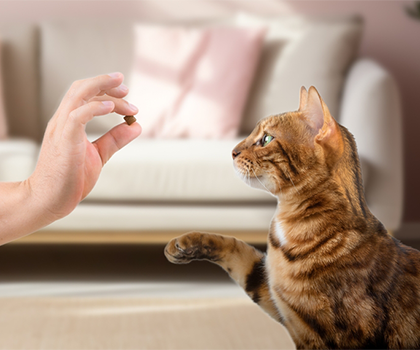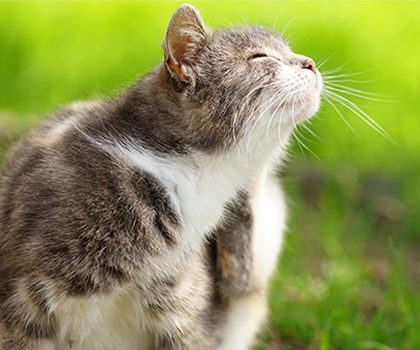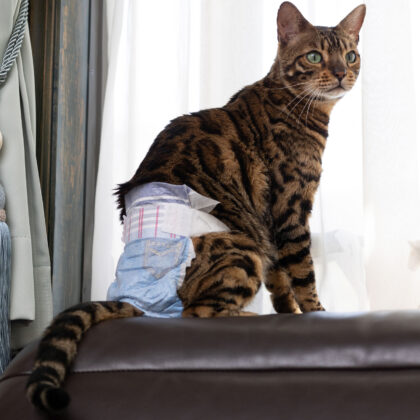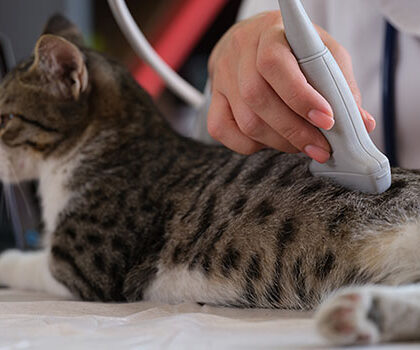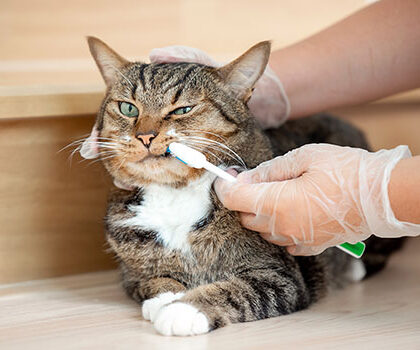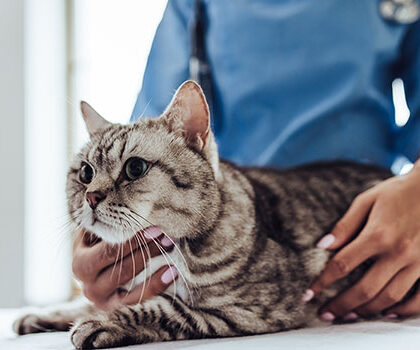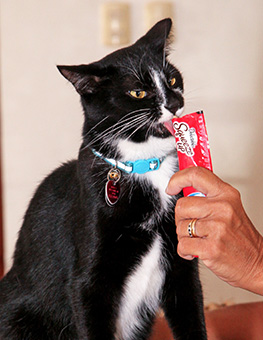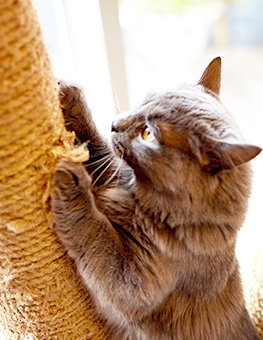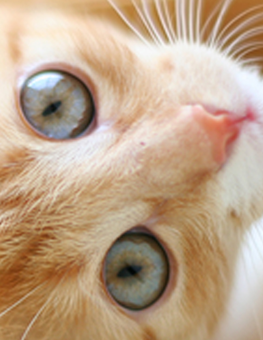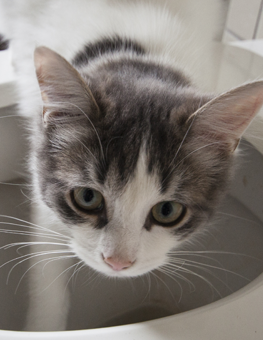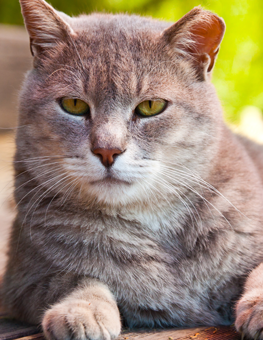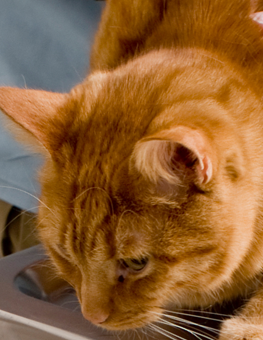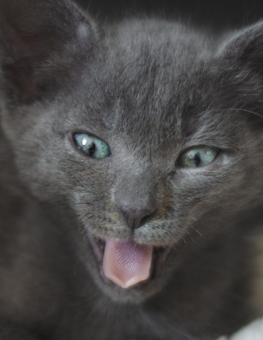Oral Care and Your Cat’s Health
Fact: Very few cat owners regularly brush their pet’s teeth.
In spite of all of the information regarding the importance of good oral health, few pet owners regularly take the single most effective measure to prevent periodontal disease: toothbrushing. This is especially true with cats.
Preventing oral disease is a quality of life issue.
According to veterinarians, periodontal disease (“peri” means around, “dontal” means tooth) is the most common disease in small animal patients. Periodontal disease not only creates localized infection, but it has been linked to numerous severe diseases of primary body organs, including the heart, liver and kidneys. For this reason, the prevention of periodontal disease is considered a medical issue, as its ramifications extend far beyond lost teeth. Preventive dental care is essential to ensuring a long, healthy life for your cat.
Periodontal disease happens over time and is preventable.
Periodontal disease is the result of a sequence of events that have been going on in your cat's mouth since the day she got her first tooth. Bacterial plaque that is not removed begins to build up on the teeth soon, the plaque mineralizes to tartar. As the tartar and plaque accumulates, it causes inflammation of the gums (gingivitis). While gingivitis is treatable, it quickly turns into periodontal disease, which is irreversible. Eventually, gums start to recede and eventually the attachments holding the tooth in place are weakened, and the tooth becomes loose.
Toothbrushing is the best way to prevent disease.
The process of disease development can take several years to complete, but it is reversible in the early stages. The best way to prevent disease is to keep plaque and tartar from building up. Regular brushing has been found to be the most effective method of preventing periodontal disease in cats. But, rare is the cat who loves to have its teeth brushed, and rare is the owner who is willing to comply with this often difficult task.
Alternatives to toothbrushing.
There are a number of alternatives to brushing to help maintain good oral health in your cat. Research suggests a coarsely textured diet can act as a natural cleaning agent on your pet’s teeth as she eats. Much like her cousins in the wild who chew and tear their prey, your cat can derive a similar benefit from her diet to help reduce tartar and plaque buildup on her teeth. In this manner, dental exercisers and chew toys also assist in reducing plaque.
Other options for in-home between cleaning dental care include crunchy dental treats and special dental diets designed to combat plaque and tartar and water additives and oral gels (available from your veterinarian) designed to reduce the number of bacteria in your cat’s mouth.
If left untreated, periodontal disease is the single greatest cause of health problems in cats. Fortunately, it is completely preventable. By keeping your pet’s teeth clean, you will be helping to provide her with a lifetime of general good health.
The most common symptoms of oral disease in cats are:
- Bad breath
- Yellow or brown deposits on the teeth at the edges of the gums
- Red gum edges
- Receding gums and loose teeth
- Drooling saliva
- Lack of appetite
- Mouth pain (pawing at the mouth or rubbing the side of the mouth along the ground).
- Difficulty in chewing food
- Inability to close the mouth



